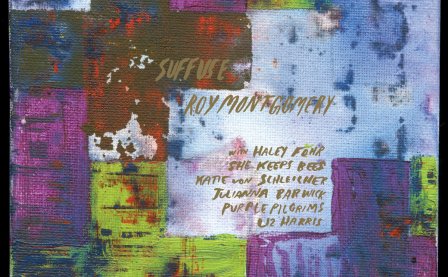As a child, Julianna Barwick sang in church choirs in Louisiana and Missouri. When recollecting those a capella hymns of her childhood, it is not the words or the melodies that she remembers, but the different voices’ textures and massed shapes filling a very physical space. She says, “you could really hear all the layers, harmonies, rounds, the men and the women, the claps… everything.” Now a Brooklyn composer, Barwick has previously self-released the Sanguine LP and Florine EP, two well-received releases of elaborate one-woman choral compositions built up out of her own looped voice, layered into wordless, room-filling multitudes. In an interview, Barwick described her project as “looking for the perfect reverb.”
Her comment, itself an echo of Afrika Bambaataa’s cosmic mission statement “Looking for the Perfect Beat,” draws a connection between Barwick’s sacred ambient music and Bambaataa’s spaced-out electro via hip hop and techno’s dub roots. Although Barwick’s compositional device of choice, the loop, is most associated with the DJ’s hedonistic communion with the club-goer, the ecstatic highs of the rave have similarities to countless mystical traditions like the American Shakers or the Sufi whirling dervishes. These teach us that, though our lives, experiences, and visions are woefully limited, infinity can be tasted by minimizing the self. Using modest fragments of voice to create endless, wheeling pillars of sound, Barwick’s sacred music made of loops partakes of this history-spanning insight, that infinity is to be achieved through repetition, and Barwick’s meticulously arranged but transcendent music has never been more sophisticated or immersive than on her new LP, The Magic Place.
If the loop can expand to fill the universe, like the fractal, the loop can also circle increasingly further inward to fill space with infinite but self-similar complexity. Barwick stresses that she composes her music “all with headphones.” She remarks that she can’t even hear herself singing because the recordings of her own voice in her headphones drown out her singing voice in the present. This simultaneous absence and omnipresence, in which the self becomes both multiplied and divorced from itself, is a type of layering that takes place not at the level of the loop, but at the level of reality itself. On this album, Barwick creates complex journeys through space and time within the confines of a finite space.
Compared to her two previous releases, Barwick’s songs on The Magic Place are much longer and more layered, with a greater diversity of textures and instrumentation. Lead single “The Magic Place” is the most neoclassical track she has yet released. It is pleasingly lush, if a bit new-agey, with less of Barwick’s usual alien, yelpy, Panda Bear-meets-Elizabeth Fraser presence. “Vow” is her most conventional song yet, built out of a tranquil piano loop, upright bass strums, and a simple, singsong vocal. Longest track “Prizewinning” gradually summons a widescreen march, its looped bassline and sampled percussion leading into a stirring synth-string melody. The best songs, however, are still those with the most restrained palettes: “Keep Up the Good Work” thrills with cardiac microphone thumps, a loop of three piano notes that peals like a church bell, and dramatic, swooping vocal contrails.
Barwick still resists linear development in her songs. With Sanguine, this seemed like something of a conceptual gambit — it seemed these were less songs than tracks, composed of loops and intended to be themselves looped and integrated into a larger DJ composition. The greatest virtue of Barwick’s songs is still the gossamer momentousness they summon. Her compositions are, by virtue of their wordlessness, hard to recall or recreate in the mind’s ear, even after just hearing them. On the very first listen, they are already at the edge of our memory, reminiscent of the half-remembered tunes we hum to ourselves when we aren’t paying attention to who might be listening. Vanishingly, impersonally small, and expansively boundless, Barwick’s songs express a view towards life and death like that of Emily Dickinson in her many well-known poems written from the point of view of the deceased. This is the hypnagogic pop of angels, humming to themselves the half-remembered pop tunes of life. If heaven exists, like Barwick’s infinite miniatures, it is shaped like a loop.
More about: Julianna Barwick




